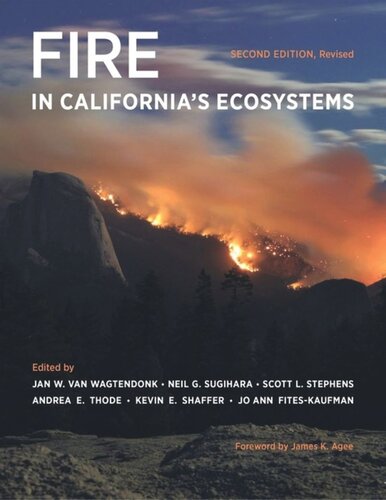

Most ebook files are in PDF format, so you can easily read them using various software such as Foxit Reader or directly on the Google Chrome browser.
Some ebook files are released by publishers in other formats such as .awz, .mobi, .epub, .fb2, etc. You may need to install specific software to read these formats on mobile/PC, such as Calibre.
Please read the tutorial at this link: https://ebookbell.com/faq
We offer FREE conversion to the popular formats you request; however, this may take some time. Therefore, right after payment, please email us, and we will try to provide the service as quickly as possible.
For some exceptional file formats or broken links (if any), please refrain from opening any disputes. Instead, email us first, and we will try to assist within a maximum of 6 hours.
EbookBell Team

4.7
86 reviewsFire in California’s Ecosystems describes fire in detail—both as an integral natural process in the California landscape and as a growing threat to urban and suburban developments in the state. Written by many of the foremost authorities on the subject, this comprehensive volume is an ideal authoritative reference tool and the foremost synthesis of knowledge on the science, ecology, and management of fire in California. Part One introduces the basics of fire ecology, including overviews of historical fires, vegetation, climate, weather, fire as a physical and ecological process, and fire regimes, and reviews the interactions between fire and the physical, plant, and animal components of the environment. Part Two explores the history and ecology of fire in each of California's nine bioregions. Part Three examines fire management in California during Native American and post-Euro-American settlement and also current issues related to fire policy such as fuel management, watershed management, air quality, invasive plant species, at-risk species, climate change, social dynamics, and the future of fire management. This edition includes critical scientific and management updates and four new chapters on fire weather, fire regimes, climate change, and social dynamics.